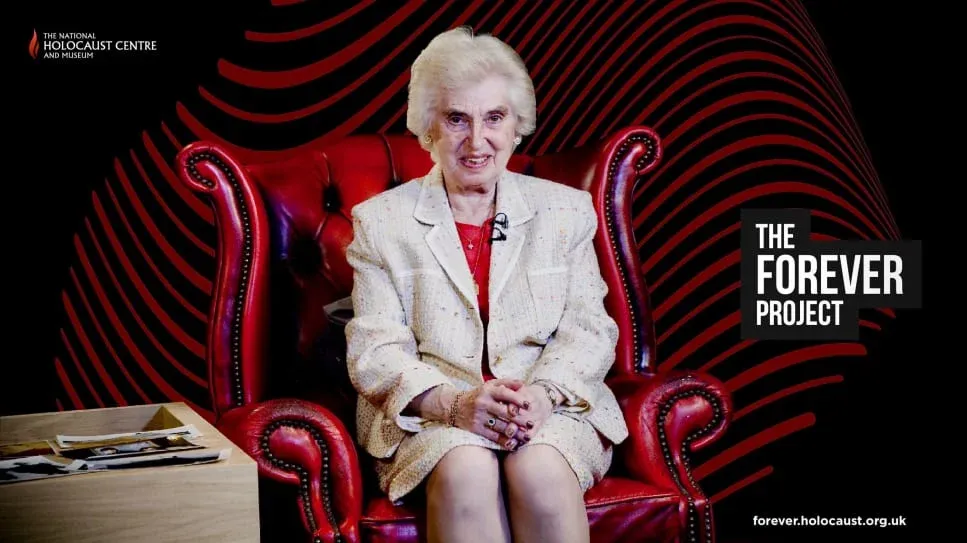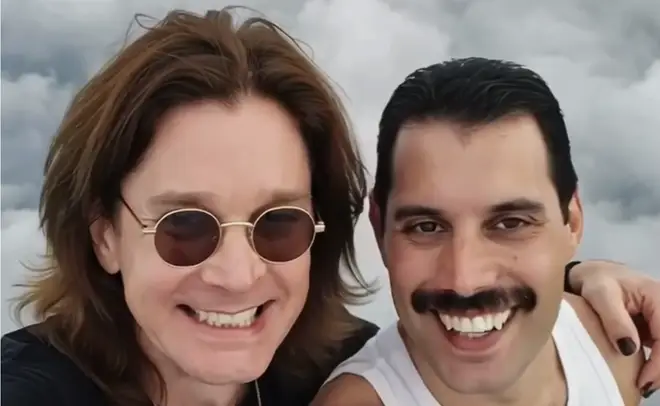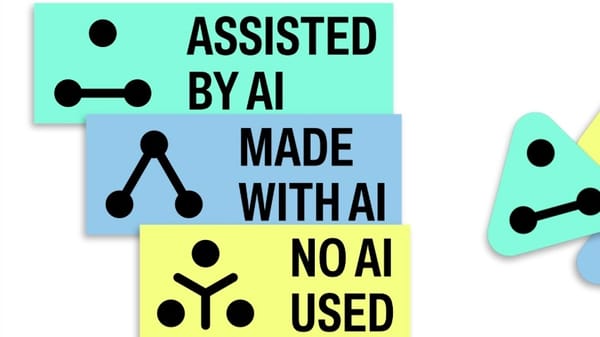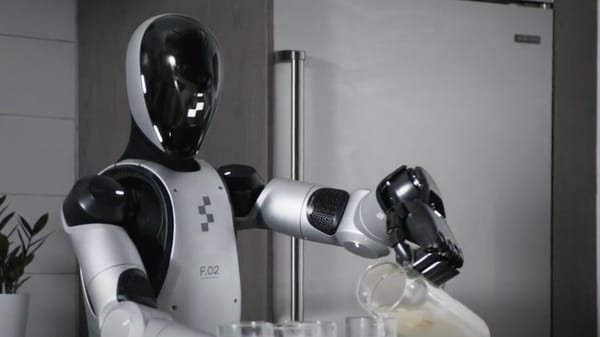Preserving Living Memory: The Evolution of Interactive Holocaust Survivor Testimony

In the mid 2010s a new type of digital preservation emerged through projects in the US, UK and Europe. Fuelled by the race against time to preserve the firsthand accounts of Holocaust survivors (and well before the advent of ChatGPT and the public popularisation of AI) the projects combined voice recognition, natural language processing and authentic recorded media.
These interactive testimonies sought to replicate (as much as possible) a face to face encounter with a witness. Enabling visitors to have real-time conversations with authentic digital representations of survivors. By using voice recognition and AI to match questions with pre-recorded authentic answers, the systems created the sense of a living dialogue that was true to the essence of the people interviewed.
Learners were able to ask the survivors questions and receive authentic answers from them, even after the survivors themselves had passed away, with the systems matching questions asked to the most appropriate answer based on a confidence score.
At the intersection of memory, technology, and ethics, the programmes that pushed this new approach forward were: The Forever Project in the UK, the LediZ project in Germany, and New Dimensions in Testimony in the US. These initiatives still provide critical insight into the value of authentic content, how AI approaches can be leveraged whilst maintaining the human voice, and considerations for organisations working to represent real human stories today.
The Importance of Authentic Preservation
When it comes to any witness testimony, authenticity is an ethical and moral responsibility. As the generation of eyewitnesses to the Holocaust grows older, we're approaching a critical moment when living connections to these events will soon be gone. Each survivor holds a unique and irreplaceable account, full of memories, emotions, words of wisdom and of warning.
At the National Holocaust Centre and Museum in the UK, The Forever Project embraced this responsibility and took an authenticity-first approach to digital testimony. Leading this initiative, I saw firsthand how much care and precision went into capturing each testimony. Every interview, each question posed to the survivor, and each answer given, was logged to preserve a chain of evidence. With over 1,000 responses recorded per survivor, the result was not just an archive of information, but more a record of human experience.
Filmed in 3D, The Forever Project captured significant amounts of audiovisual data - something which was even more the case with New Dimensions in Testimony, developed by USC Shoah Foundation in collaboration with the USC Institute for Creative Technologies. New Dimensions captured a similarly intense period of recording with each survivor, but on a 360 degree light stage which captured the survivor in different lighting conditions.
Like New Dimensions and Forever, the LeDiz (learning with digital testimonies) project based at Ludwig Maximilian University of Munich - delivered by the conversational media company In The Room (of which I was a founder) - created a group audience 3d experience with a survivor, but this time in the German language. Hosted at the University in a 3d theatre, the project helped to educate students from the history department and wider faculties - allowing them to “meet” a survivor, hear their testimony, and ask them questions. All through a digital, but authentic, projection.
At this point it is worth being specific about why authenticity is particularly critical in these specific digital experiences. This might seem obvious, but at a time when the focus is on AI-generated media it is worth emphasising. In a video testimony, it's not only about words spoken, but about the voice, expressions, body language, even the pauses, which all convey meaning. When a survivor’s voice falters, we feel history as well as learn it. Knowing that the media is authentic - that it was a recording of a specific person at a specific time - is crucial to our value and understanding of it as a real human experience.
Quite simply - primary evidence.
Leveraging AI for Audience Agency
What makes these projects stand out is the creation of experiences that combine authentic content with the ability to interact with that content via voice (or text): to enable others to experience a closeness to the witnesses who gave the testimony, even if they are thousands of miles away or many years apart.
The agency that this gives to the user, combined with the nature of the media, provides an especially human experience. And it is this that results in demonstrable benefits.
The interactive testimony projects are powerful examples of how this type of technology and approach can deepen our engagement with learning. Independent research has verified this.
Research from the University of Connecticut shows that students who interact with The Forever Project demonstrate increased empathy and a stronger understanding of historical context.
In the US, a pilot study at the Illinois Holocaust Museum and Education Center found that students who interacted with survivor Pinchas Gutter felt a deeper emotional connection to Holocaust history.
Navigating the Future: Authentic Media in a Synthetic Age
As digital tools grow more powerful, they raise pressing questions about where preservation ends and recreation begins. There's a crucial difference between capturing a survivor’s actual words and gestures, and generating responses that imitate them.
Why does that matter? Because victims and witnesses to horrific events sit at the outer edge of human experience. Any attempt to simulate a survivor's account potentially risks not only dulling the emotional truth of what they endured and undermining their voice, but creating distrust. When we hear survivors speak in their own words, with their own inflections and expressions, we connect with an authentic experience of a real human. That retelling is powerful precisely because it is their authentic expression and we appreciate the sense of proximity to that experience.
The strength of these projects lies in their care in considering that ethical line. They present what the survivors actually said, in their own voices, on their own terms. It's a moral and ethical choice, not a technical one. AI is leveraged to provide the audience with agency, but not leveraged to provide the content.
As AI continues to evolve, the line between authentic and artificial media is getting harder to draw, and arguably in certain situations more important to hold. In the context of Holocaust testimony, or any witness record, that line matters deeply and care and consideration need to be given to applications.
Here are some considerations when thinking about how we use technology in this space:
- Prioritize the RealWhen preserving stories of historical trauma or something that could be perceived as such, authenticity must come first. The emotional truth of real testimony carries a weight that no simulation can match.
- Be TransparentAudiences should always be told how digital testimonies were created. Clarity builds trust and allows users to engage critically with what they’re experiencing.
- Respect Survivor AgencySurvivors should have a say in how their stories are told. Their involvement isn't just respectful, it’s essential to ethical storytelling.
- Serve Education, Not Tech for Tech’s SakeTechnology should be in service to education, empathy, and remembrance rather than a showcase for technical prowess. Ensure that you are fully considering the implications, the audience and the ethics.
Looking Forward
As the number of living Holocaust survivors dwindles, these interactive projects take on a greater role. But their value doesn’t lie in technical brilliance alone. It lies in how faithfully they preserve the voices and experiences of those who lived through unimaginable events.
The Forever Project, New Dimensions in Testimony, and LediZ share a vital goal: to keep memory alive, honestly and respectfully. But crucially leveraging AI in a way that can engage new learners who will never have the opportunity to meet these unique people.
In an age of synthetic media, they remind us that some stories are too human to replicate. When we see a survivor pause before speaking, or hear their voice crack with emotion, we aren't just receiving information. We are witnessing history as it was lived by real people who live and breath.
That kind of truth can’t be generated. It can only be preserved.




